- Author Curtis Blomfield [email protected].
- Public 2023-12-16 20:44.
- Last modified 2025-01-23 17:01.
Sinusitis is a dangerous disease associated with inflammation of the paranasal sinuses. Correct diagnosis and timely therapy will help to avoid complications. It is recommended to seek help at the first symptoms of the pathological process.
Description of the disease
Inflammation of the paranasal sinuses is accompanied by shortness of breath and mucous discharge from the nose. The same symptoms develop with the common cold. Timely diagnosis of sinusitis will allow to start adequate therapy. You cannot self-medicate. Drugs to eliminate inflammation will be prescribed by the doctor after a thorough study.
The maxillary sinus is an air-filled cavity. With its help, pressure is equalized in other cavities of the skull. In addition, the maxillary sinuses are involved in cleansing and warming the air inhaled by the nose. The sound of the voice of a particular person also depends on this cavity. The sinuses communicate with the nose through miniature openings. And if they get into the cavity through thempathogenic bacteria, inflammation develops.
Unfortunately, the diagnosis of sinusitis in adults and children is not always correct. Patients pay attention only to mucous secretions and begin to treat the disease with antiviral drops. Sinusitis is more often caused by pathogenic bacteria. To eliminate the symptoms of the pathological process, it is necessary to use antibiotics.
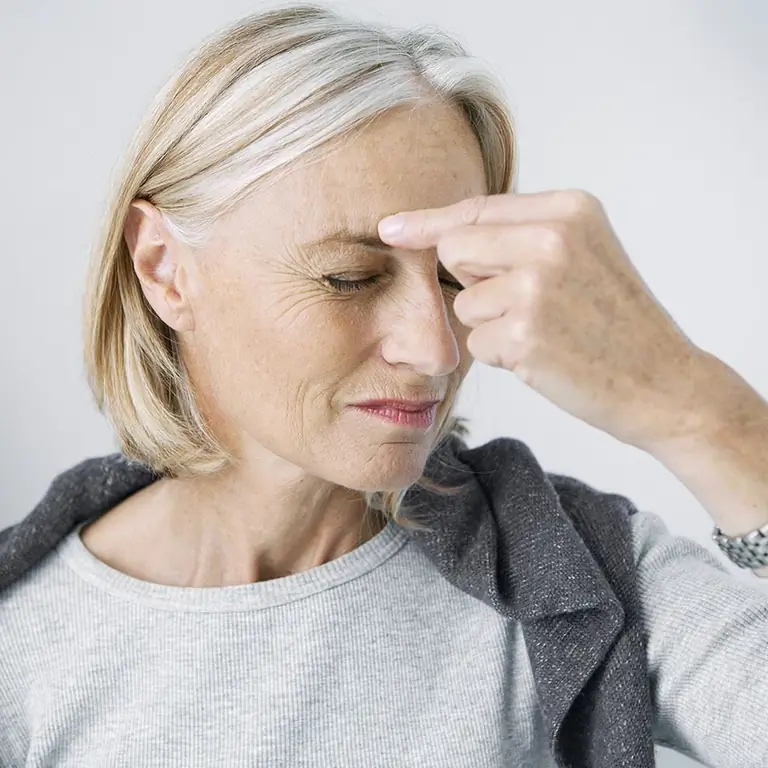
Most often the disease is caused by staphylococci and streptococci. An interesting fact is that children under 6 years of age rarely experience the disease due to the anatomical features of the structure of the skull. In children 7-8 years old, sinusitis can already occur. Diagnosis and treatment in this case is carried out in the same way as in adult patients.
Sinusitis in most cases develops against the background of colds. The risk of experiencing unpleasant symptoms increases during the period of seasonal cold weather. In children, adenoids or anatomical defects (curvature of the nasal septum) can provoke the rapid multiplication of pathogenic microflora. Carious teeth of the upper jaw also often provoke the development of sinusitis. Diagnosis and treatment is carried out after clarification of the possible causes of the inflammatory process.
Classification
Diagnosis of sinusitis makes it possible to find out what type of disease you had to face. The pathological process can develop in a catarrhal or purulent form. However, the treatment methods will differ. The purulent form of the disease is considered more complex. Mostcases, the patient experiences symptoms of general intoxication of the body, the body temperature rises. If sinusitis in a catarrhal form is not treated in a timely manner, pus may appear in the sinuses.
To find out the ways of penetration of the infection, the diagnosis of sinusitis is also carried out. In adults, the disease most often develops in the rhinogenic form. At the same time, pathological microflora enters the sinuses through the nose. Sinusitis develops against the background of SARS. In children, more often bacteria enter the sinuses by the hematogenous route - through the blood from other affected organs. Some difficulties are caused by the diagnosis of odontogenic sinusitis. The pathological process in this case is caused by carious teeth. However, the examination is not always carried out by a dentist.
Initially, the disease develops in an acute form. If therapy is carried out incorrectly or out of time, sinusitis develops into a chronic form. At the same time, longer and more expensive treatment is already required.
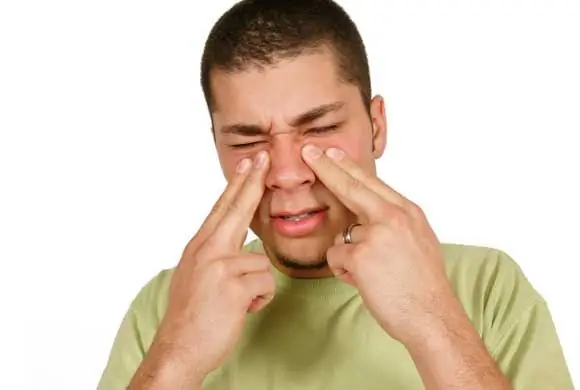
Symptomatics
Diagnosis of sinusitis always begins with a patient questioning. The doctor specifies what symptoms are accompanied by a deterioration in well-being, when the first signs of the pathological process appeared. As a rule, sinusitis develops against the background of a common cold. As soon as the pathogenic microflora penetrates into the sinuses, an immune reaction of the body is observed. Body temperature rises to 38-39 degrees Celsius. In rare cases, body temperature may remain normal. An important sign of sinusitis is pain in the nose. Unpleasantsensations are aggravated by palpation and leaning forward.
When sinusitis, as a rule, nasal breathing is disturbed. At the same time, vasoconstrictor drops do not alleviate the patient's well-being. The patient is forced to breathe through the mouth. Due to blockage of the tear duct, tearing may develop. There is mucous discharge from the nose. Initially, they have a serous (liquid) character. The discharge then becomes thick, greenish and foul-smelling.
Diagnosis of sinusitis is impossible without hardware research methods. X-ray is the most accessible method to determine the location and type of the inflammatory process. Today, special equipment is available in every medical institution. Specialists manage to visualize not only the maxillary, but also the frontal sinuses. Most often, the radiograph is performed in three projections - nasolabial, naso-chin and chin.
How is sinusitis determined? Diagnostics (X-ray) makes it possible to understand how much the mucosa is changed. Turbidity in the picture will indicate the inflammatory process. In addition, during the diagnostic process, polyps and cysts in the sinuses can be detected. The data obtained, combined with the patient's complaints, make it possible to make an accurate diagnosis.
X-ray taken twice. Initially, the study makes it possible to make an accurate diagnosis. Then, with the help of the technique, it is possible to get ahead of whether the inflammatory process has gone, whether the treatment was prescribed correctly. If the study is necessary for a pregnant woman, the doctor will prefer to useanother diagnostic technique.
Indication for the study is the suspicion of acute sinusitis. It is impossible to carry out the procedure for patients in serious condition, as well as with open bleeding. Contraindications also include the period of pregnancy and lactation.
Computed tomography
The technique is used if the diagnosis of sinusitis by X-ray is not possible. Also, this method of research is indicated for suspected odontogenic sinusitis or rhinitis. In addition, computed tomography can detect the disease in a chronic form during remission. Computed tomography may be prescribed for suspected benign or malignant tumors in the sinuses. A full scan of the nose area is performed in the frontal and coronal projections. Computed tomography is ideal for examining the conditions of the sinuses before a planned surgical intervention.
In acute sinusitis, the study makes it possible to identify the localization of the inflammatory process, as well as the presence of fluid in the maxillary sinuses. In addition, computed tomography can provide information about the anatomical features of the patient's skull. Computed tomography is performed by specialists after the relief of acute inflammation.
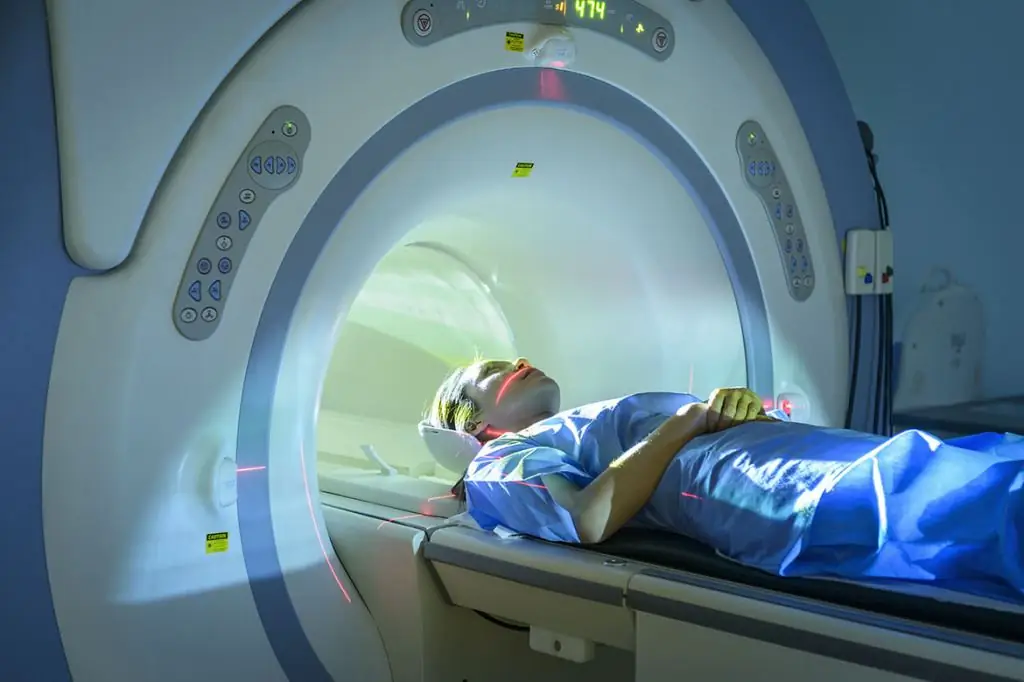
MRI
In case of suspicion of an allergic nature of the disease or a fungal infection, computed tomography is replaced with magnetic resonance. Such a study is also indicated for suspected tumors in the sinus. With MRIyou can also visualize the pathology of the structure of the skull.
CT or MRI may be ordered for suspected sinusitis or maxillary sinus cyst. Differential diagnosis is carried out using several methods at once. Not only otolaryngologists, but also dentists and surgeons can take part in the study.
Described studies are contraindicated during pregnancy. Exposure to radiation greatly increases the risk of fetal malformations.
Other diagnostic methods
How else can sinusitis be detected? The diagnostic methods that are used most often have been described above. However, in some cases, when it is not possible to determine the disease, the doctor may resort to other methods of diagnosis. So, sometimes specialists conduct an ultrasound examination of the paranasal sinuses. Ultrasound makes it possible to detect fluid in the inflamed cavity. The technique is used if an X-ray does not allow an accurate diagnosis, and there is no CT or MRI in a medical institution.

Fiberoptic endoscopy can be performed in private clinics. This technique is used to diagnose sinusitis in children and adults and makes it possible to clearly visualize the sinuses, any morphological changes inside them. Indications also include fungal lesions or cysts in the sinuses. Ultrasound has no absolute contraindications.
Laboratory studies
Dif. diagnosis of sinusitis can not do without a series of studies in the laboratoryconditions. A blood test is required. The development of the inflammatory process will be indicated by an increased erythrocyte sedimentation rate (ESR). The presence of a bacterial infection in the body will be indicated by an increased level of protein in the blood. With recurrent acute sinusitis, an immunodeficiency test is prescribed. Additionally, you will have to donate venous blood for the study of HIV infection.
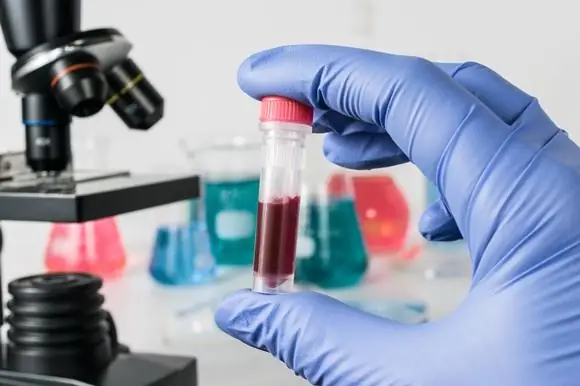
With a prolonged course of the disease, a cytological examination of discharge from the nose is performed. Thus, it is possible to accurately determine which pathogenic microflora caused the disease. Laboratory diagnosis of chronic sinusitis allows you to choose the right drugs for therapy, taking into account the sensitivity of pathogenic bacteria.
Puncture
With sinusitis, the clinic, diagnosis, treatment of the disease - all this is interconnected. If the type of inflammatory process is initially incorrectly determined, the therapy will also not give the desired results. If within a week the symptoms of the pathological process do not go away, the specialist may resort to minor surgical intervention. A puncture is a procedure that allows you to wash the affected sinuses, treat them with an antibacterial drug. However, you should not trust a specialist who prescribes a puncture immediately after the diagnosis is made. Indications for such manipulation may occur if conservative treatment does not give positive results. With catarrhal sinusitis, a puncture is also contraindicated.
Puncture can beprescribed for both adults and children. Manipulation is not complicated and can be performed on an outpatient basis under local anesthesia. The puncture is performed through the lower nasal passage. The procedure is uncomfortable but painless. A special syringe is used to flush the affected sinus.

With proper puncture, you should not expect unpleasant consequences. A doctor's mistake can lead to the fact that the medicine will be injected into the cheek. The result is soft tissue inflammation. Also, if the procedure is performed incorrectly, complications such as vascular embolism, orbital phlegmon, otitis media, cheek abscess, etc. can develop.
Treatment
If the diagnosis of sinusitis was confirmed, differential diagnosis did not reveal other pathologies, therapy should be started immediately. Poor he alth of the patient, elevated body temperature - a reason for hospitalization. The patient must comply with bed rest, give up excessive physical exertion, eat right. Warm meat and vegetable broths, fresh compotes and juices are the best choice. In the acute period of the disease, the body should not be loaded with heavy products.
Non-steroidal anti-inflammatory drugs are prescribed to normalize the general condition of the patient. Adults and children are often prescribed Nurofen, Panadol, Paracetamol. It is possible to restore normal ventilation of the sinus and remove the swelling of the mucosa with the help of vasoconstrictors. Can be used drugs "Rinazolin", "Naphthyzinum".
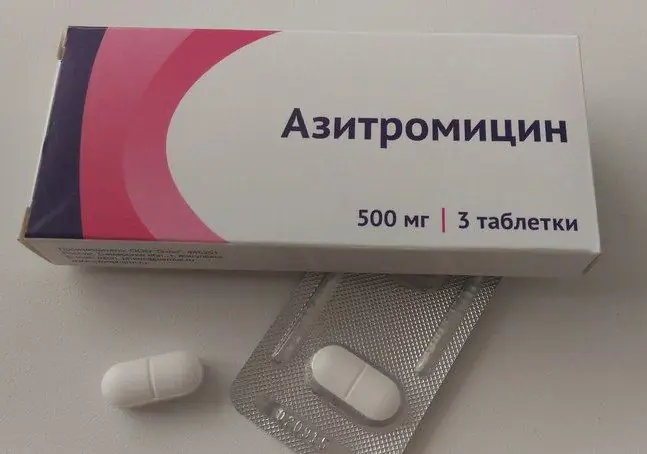
Sinusitis is rarely treated without antibiotics. As a rule, broad-spectrum drugs are used - Azithromycin, Augmentin, Sumamed, Ceftriaxone, etc. The course of therapy is 7-10 days.
After stopping the acute inflammatory process, physiotherapeutic procedures are prescribed. Good results show inhalation, electrophoresis, UHF. The procedure called "cuckoo" deserves special attention. In the manipulation room, under conditions of complete sterility, a liquid for washing is injected into the maxillary sinuses using a special syringe. At the same time, the patient says “coo-coo” in order to avoid getting the solution into the throat. For the procedure, solutions such as "Decasan", "Furacilin" are used. Ordinary saline is also widely used.
With a mild degree of sinusitis, treatment can be done at home. Good results show folk remedies. However, their use should be discussed with your doctor. Nasal lavage can be performed using decoctions of chamomile or sage. In the catarrhal form of the disease, it will be possible to stop the inflammation with the help of inhalations.
Prognosis of treatment and prevention
With a timely diagnosis and proper treatment, unpleasant symptoms can be quickly eliminated. But the refusal of treatment often leads to unpleasant consequences, including death. Meningitis is one of the dangerous complications of sinusitis. If symptoms such as severe headache, dizziness, light and sound phobia appear against the background of a runny nose, call an ambulanceneeded immediately.
Other complications of sinusitis include: acute otitis media, sepsis, osteomyelitis. Often, pathogenic microflora spreads throughout the body, and chronic diseases develop in other systems.
Prevention of sinusitis is the timely treatment of colds, maintaining an active lifestyle and seeking medical help for any unpleasant symptoms.






